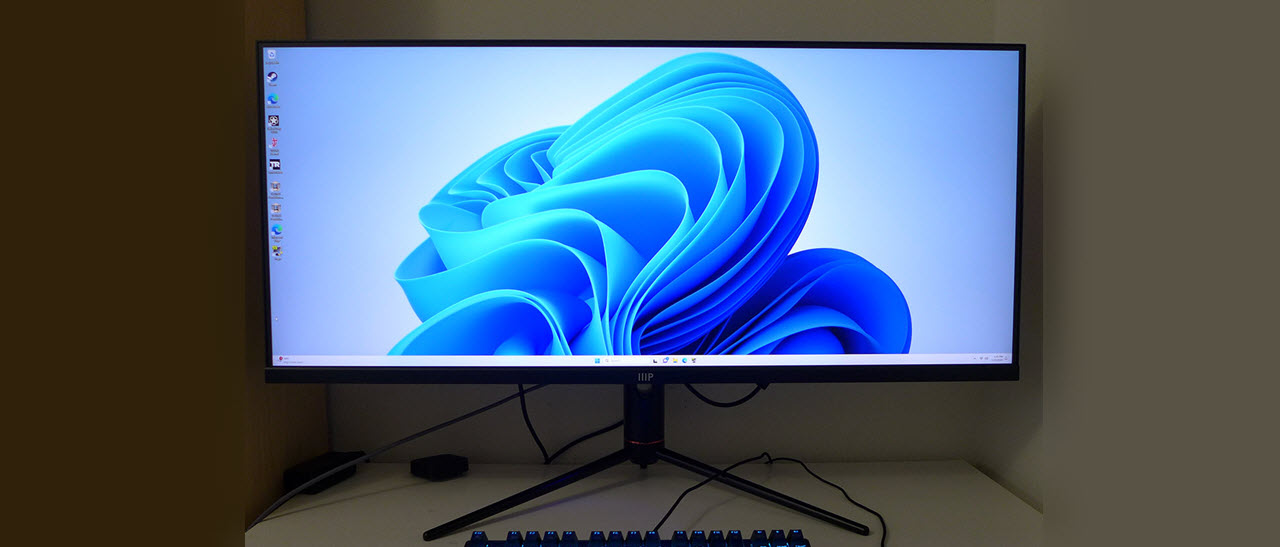Tom's Hardware Verdict
The Monoprice 44394 40-inch Crystal Pro gaming monitor delivers a huge screen for a low price. It has superb contrast and color accuracy with its only flaws being dark HDR and a weak overdrive. For the money, it’s a good choice for users needing extra screen area but don’t want two monitors.
Pros
- +
A lot of screen area for a low price
- +
Excellent contrast, and off-axis image quality
- +
Accurate color without calibration
- +
Very low input lag
- +
Solid build quality
Cons
- -
HDR needs a darkened room to look its best
- -
Weak overdrive means more motion blur than competitors
- -
Fiddly OSD navigation
Why you can trust Tom's Hardware
Jumbo monitors come in many shapes and sizes. The aspect ratios we see most often are 16:9, 21:9, and 32:9, and curved screens are prevalent as well. One thing I haven’t seen in a while is a flat 21:9 display. All the ultrawides, including the best ultrawide gaming monitors I’ve reviewed over the past few years, have been curved.
Monoprice offers a good number of 21:9 screens so it wasn’t too surprising to learn of the new 40-inch Crystal Pro, product 44394. It’s a flat IPS panel with 3440x1440 (WQHD) resolution, 144 Hz refresh rate, Adaptive-Sync, HDR 400 and wide gamut color. It also delivers impressive value at $500. Let’s take a look.
Monoprice 44394 40-inch Crystal Pro Specs
| Panel Type / Backlight | IPS / W-LED, edge array |
| Row 1 - Cell 0 | 16 dimming zones |
| Screen Size / Aspect Ratio | 40 inches / 21:9 |
| Max Resolution and Refresh Rate | 3440x1440 @ 144 Hz |
| Row 4 - Cell 0 | FreeSync: 50-144 Hz |
| Row 5 - Cell 0 | G-Sync Compatible |
| Native Color Depth and Gamut | 8-bit / DCI-P3 |
| Row 7 - Cell 0 | HDR10 |
| Response Time (GTG) | 8ms |
| Brightness (mfr) | 400 nits |
| Contrast (mfr) | 1,200:1 |
| Speakers | 2x 5w |
| Video Inputs | 1x DisplayPort 1.4 |
| Row 13 - Cell 0 | 2x HDMI 2.0, 1x USB-C |
| Audio | 3.5mm headphone output |
| USB 3.0 | None |
| Power Consumption | 41.4w, brightness @ 200 nits |
| Panel Dimensions WxHxD w/base | 37.2 x 19.7-23.4 x 11.3 inches (945 x 500-594 x 287mm) |
| Panel Thickness | 3.35 inches (85mm) |
| Bezel Width | Top/sides: 0.35 inch (9mm) |
| Row 20 - Cell 0 | Bottom: 0.83 inch (21mm) |
| Weight | 24.16 pounds (10.98kg) |
| Warranty | 3 years |
Thinking back, I haven’t seen a flat ultrawide panel since the early days of 21:9 screens, so the 44394 is something cool and different in today’s curved display landscape. The panel is IPS and boasts contrast that is well above average for the genre. I measured around 1,500:1 out of the box and calibrated, which is a little short of a VA monitor but well ahead of most other IPS products.
Resolution is WQHD, 3440x1440, which means a pixel density of 93ppi. That’s more than FHD and less than QHD, which are the most common screen sizes at 27 inches diagonal. So, you’ll see the pixel structure if you sit two feet away or less. But at normal viewing distances, the picture is sharp and clearly detailed.
Image quality is enhanced by solid out-of-box accuracy, enough so that calibration is not required. You also get extended color that covers nearly 88% of DCI-P3. Among the ultrawide screens I’ve reviewed, that’s about average. HDR10 signals are supported with higher contrast courtesy of a 16-zone edge dimming backlight and over 400 nits of peak output. I measured over 6,300:1 in HDR mode, which gives a nice bit of extra depth.
Gaming is addressed with a 144 Hz refresh rate and Adaptive-Sync. I had no problems running either FreeSync over a 50-144 Hz range or G-Sync. The 44394 has not been certified by Nvidia. The video processing suite includes a three-level overdrive, but there is no backlight strobe option. Play aids include game-specific picture modes, aiming points, timers and a refresh rate counter. A pair of five-watt internal speakers and colored LED light strips in the back complete the feature list. The only thing left out here are USB ports.
The 44394 is a 40-inch jumbo monitor with solid gaming cred and a nice image for $500. Even before I test it, it’s most of the way toward being an excellent choice for gamers on a budget who want a big screen.
Get Tom's Hardware's best news and in-depth reviews, straight to your inbox.
Assembly and Accessories
The 44394 comes in Monoprice’s classic plain brown box with almost nothing to distinguish it from an enterprise monitor other than its unusual shape. Once unpacked, the stand bolts together with the included fasteners. You’ll need a Phillips-head screwdriver. A stamped steel bracket and extra bolts are in the box if you want to use an arm. Once assembled, the stand snaps onto the panel. An IEC cord is enclosed for the internal power supply, and you get a DisplayPort cable.
Product 360
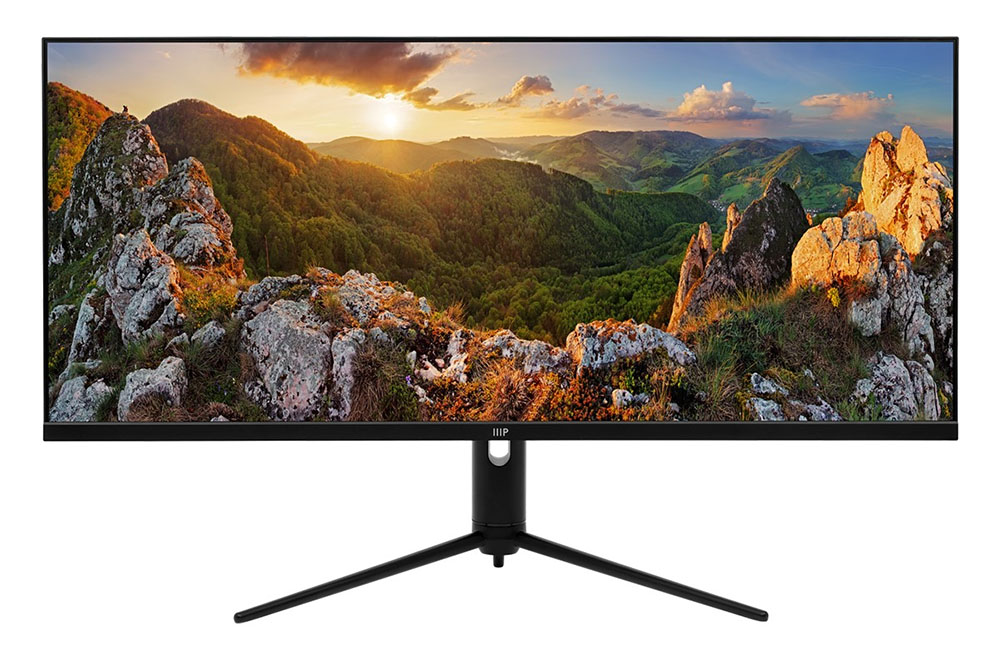

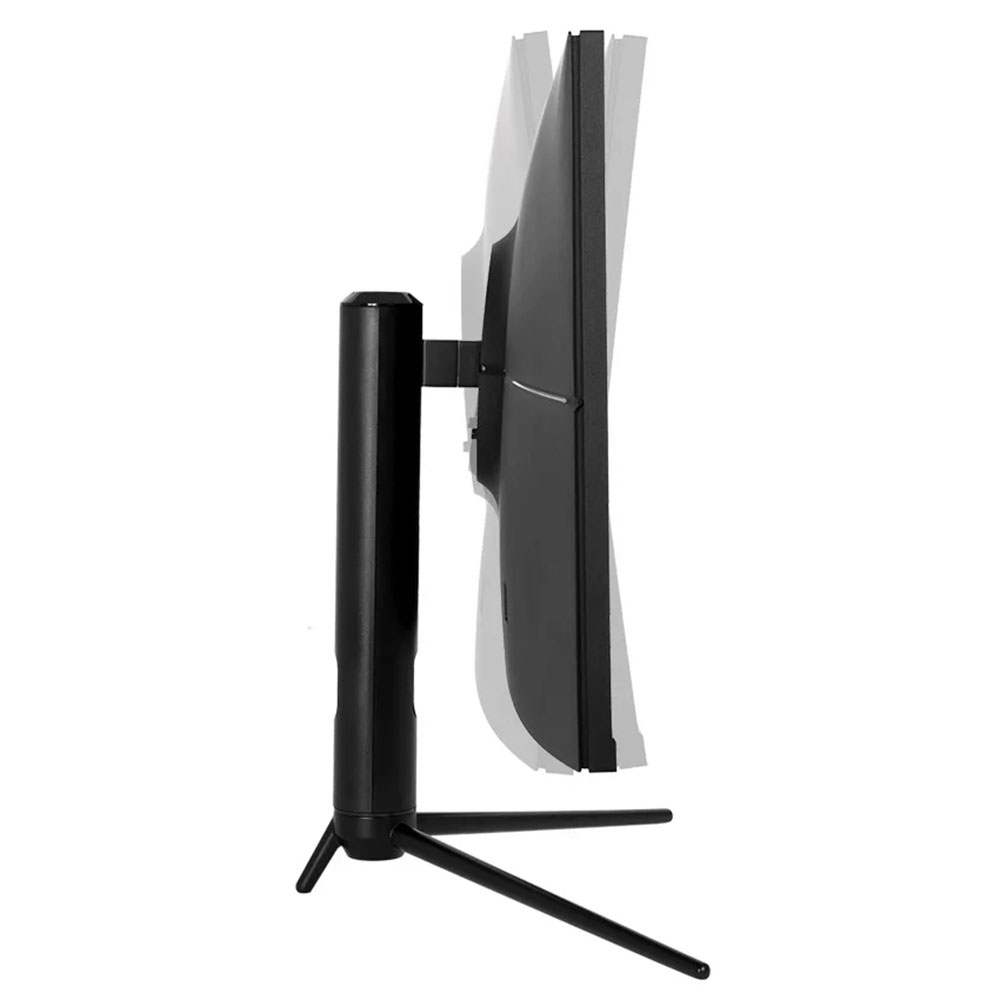
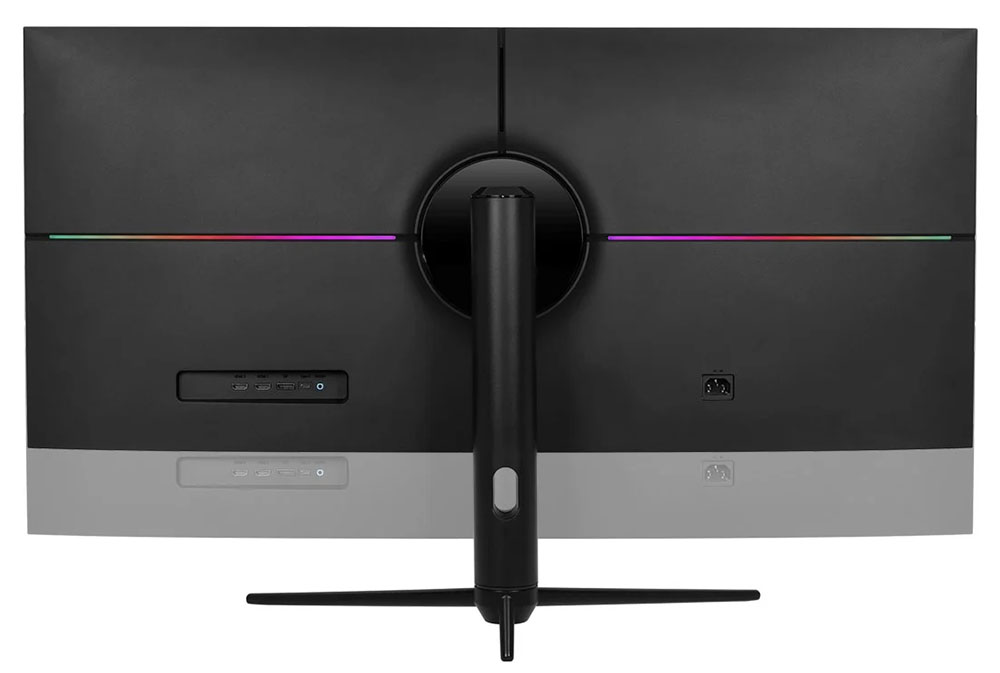

The 44394 is about as understated as a gaming monitor gets. The photos don’t show it, but there is a bit of red trim on the base and upright. The back is smooth aside from the LED strips that light up in the full spectrum and change color in a rhythmic pattern. You can turn them off in the OSD. Under the center of the bezel is a joystick and a power toggle button. The joystick lights up blue when the power is on and glows red in standby mode.
The stand is very solid despite the skinny appearance of its legs. They are all metal and create a large footprint. The 44394 isn’t going anywhere and there is no wobble. Ergonomics include a 3.7-inch height adjustment, 5/20 degrees tilt and 20 degrees swivel. Movements are smooth and sure. Build quality is well above what you’d expect for the price. At 24 pounds, this is a substantial piece of hardware.
Width is something you’ll want to consider before purchasing. The screen is almost a full meter wide, wider than any curved monitor short of 45 inches would be. The stand is almost a foot deep as well, so you’ll need some space for sure.
The inputs face out from the back, making them a lot easier to see and access than most displays with down-facing ports. There’s a single DisplayPort 1.4, two HDMI 2.0 and a USB-C that mimics DisplayPort functions and up to 90 watts of power for charging. There is no KVM feature as there are no downstream USB ports. Audio is supported by two internal speakers, five watts each, and by a 3.5mm headphone jack. The speakers play loud with a bit more depth than most, thanks to the large grill openings on the bottom of the panel.
OSD Features
The OSD is game-focused, with a graphical design and signal information at the top. I’m going on record by saying the 44394 has one of the poorest-designed joysticks I’ve encountered. It took me quite a while to adapt to its method of navigation and selection. Pressing it does nothing. Rather, clicking it right makes a selection. There are also some unique aspects to the menu that made it less intuitive.
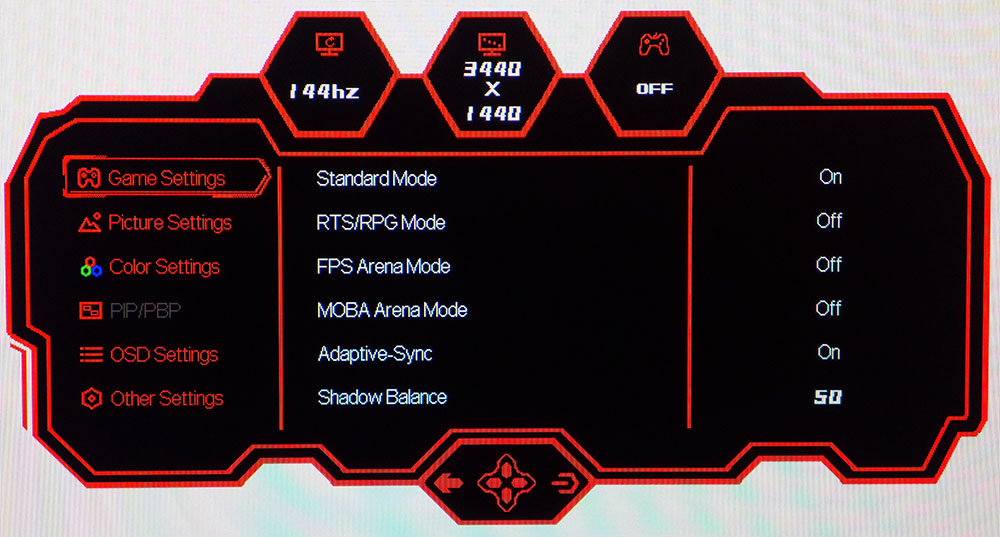

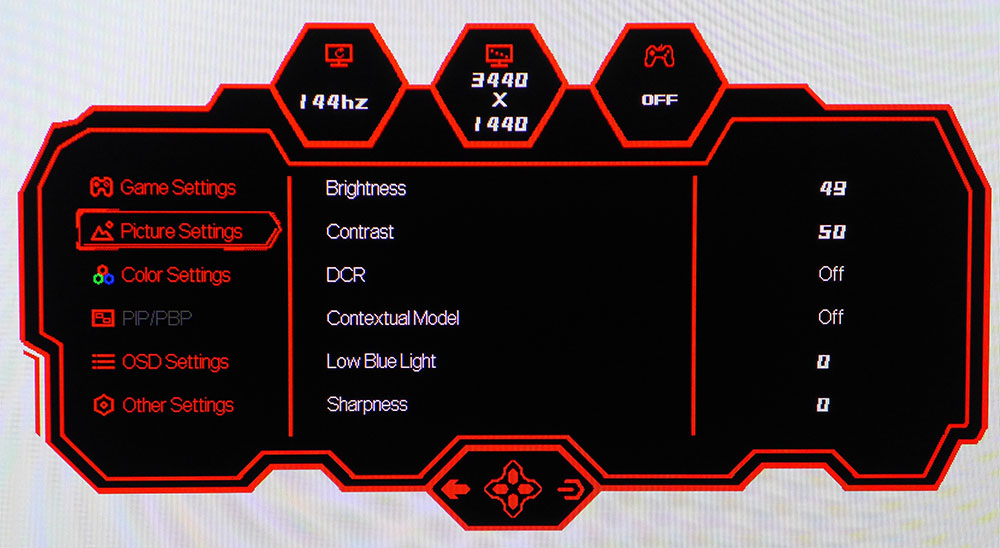
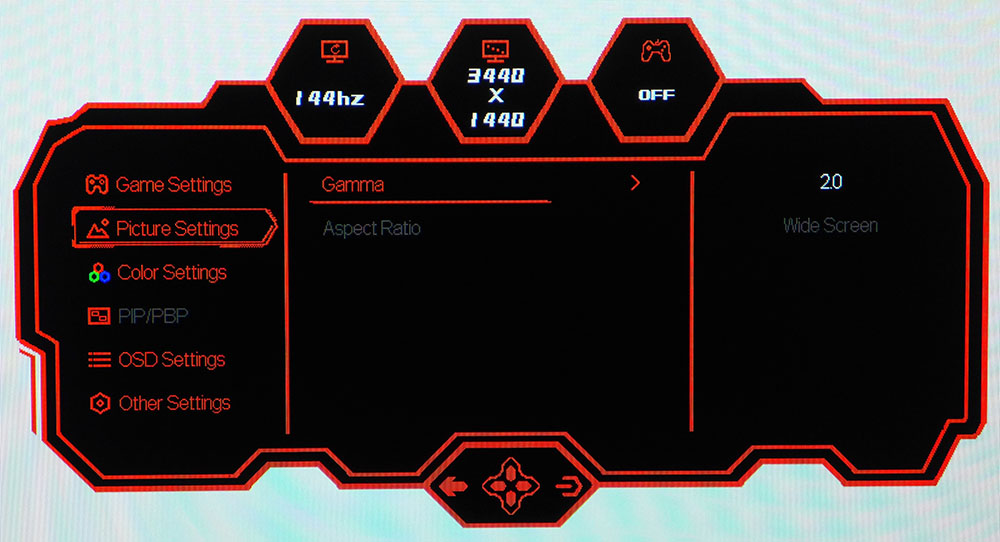
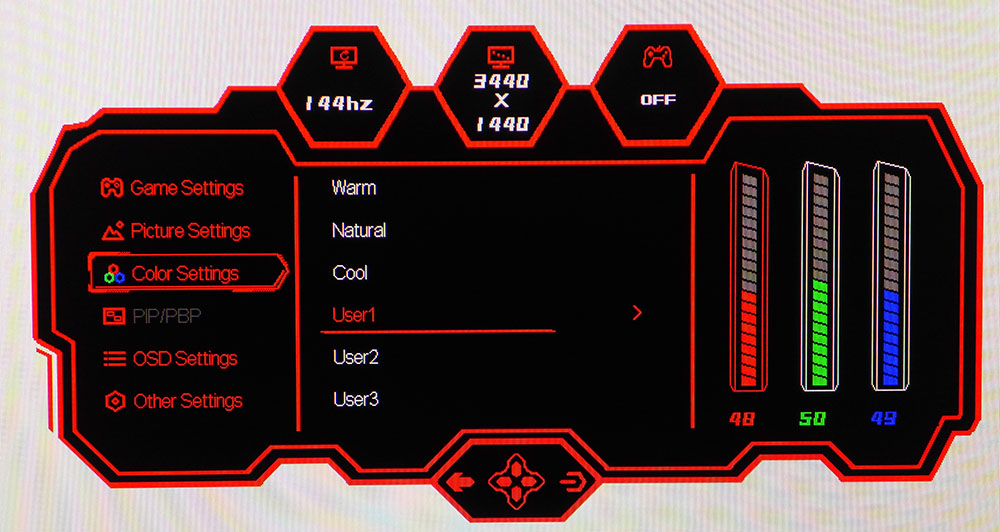
There are four picture modes in the Game Settings menu. Rather than simply picking one, you turn the desired preset on or off, definitely a head-scratcher. You can use Standard mode for everything, which is the default. Shadow Balance can be used to make dark areas more visible. Response Time is the overdrive, and it has three levels. I found all to be weak, with only minimal blur reduction. Granted, in my experience, 144 Hz is a relatively slow monitor, but the 44394’s overdrive has room for improvement.
Next in this menu are the refresh rate counter, crosshairs and timer features. Dynamic Brightness is the 16-zone dimming feature, and it is very effective at extending contrast with no real downsides. HDR has just one mode, HDR Standard, that engages automatically when the signal is applied.
In Picture Settings, you get a DCR (dynamic contrast) control, which has significant downsides. It clips a lot of highlight and shadow detail and should be avoided. Contextual Model is a game-specific set of three modes. I found no improvement when using them, and I suggest leaving them off. On the second screen are the gamma presets. 2.2 is the default, but it is quite dark, closer to 2.4 in practice. I found 2.0 to be the better choice.
In Color Settings, you get three fixed color temps plus three additional user memories with RGB sliders. A second screen offers hue and saturation sliders for all six colors. The 44394’s color is already close to spec, so you won’t need much tweaking to achieve a high standard.
Monoprice 44393 40-inch Crystal Pro Calibration Settings
The 44394 can be enjoyed without calibration in its Standard mode. I suggest trying both 2.2 and 2.0 gamma settings to see which one you prefer. In my tests, 2.0 looked better and measured a bit better as well. However, some users may prefer the darker look. In either case, plenty of light output and contrast is available, making both choices good. There is only one color gamut option, which covers 88% of DCI-P3, so those needing an sRGB setting are out of luck. My SDR settings are below.
For HDR content, set the HDR option to HDR Standard so the signal switch is automatic. You won’t need to change this setting again. HDR uses the 16-zone edge dimming backlight feature very aggressively and I noted some clipping of shadow detail with no method of correction. HDR is generally dark in tone and looks best when there is no ambient room light.
| Picture Mode | Standard |
| Brightness 200 nits | 49 |
| Brightness 120 nits | 26 |
| Brightness 100 nits | 20 |
| Brightness 80 nits | 14 |
| Brightness 50 nits | 6 (min.29 nits) |
| Contrast | 50 |
| Gamma | 2.0 |
| Color Temp User | Red 48, Green 50, Blue 49 |
Gaming and Hands-on
The 44394 is unique in my experience. It’s been many years since I reviewed a flat 21:9 screen. Most three-foot-wide wide flat panels are 16:9, but the 44394 is large enough to provide more height than typical 34-inch ultrawides. My tape measure says it’s almost as tall as a 32-inch 16:9 screen and about one-and-a-half times wider.
For me, a flat-screen is always better for working on documents and graphics. A curved screen is great for presenting information. You can have apps on the sides monitoring data like stocks or security cameras while getting work done in the center of the screen. The 44394 is fine for this, too; you just need to turn your head a little more to see the extremes of the screen. It’s smart that Monoprice chose an IPS panel for this monitor, and it’s a good one. There is no color shift or light falloff at off-center viewing angles.
Gaming was a mixed bag. On the positive side, the 44394 is very responsive to control inputs. I noted some motion blur during testing owing to the 144 Hz refresh rate and a weak overdrive. But in practice, the non-existent input lag mostly made up for this. I didn’t notice the blur when playing because I could move and aim very precisely. Pixel density is on the low side, but I wasn’t distracted by any lack of detail. Doom Eternal’s fine textures and color grading were on full display.
The downside was the 44394’s HDR presentation. In testing, I noted an effective edge-zone dimming feature that increased contrast to over 6,300:1. But I also found luminance tracking that was darker than reference. This manifested in a generally dark image. Highlights popped nicely but much of the picture lacked punch. Until I turned the lights off. The 44394 is great for dark room play. Any ambient light will take the edge off the HDR image, but a dark room makes it pop so there is a silver lining.
The 44394’s extended color gamut is in play for all content, and it lent a nice bit of extra saturation to SDR video and graphics. Working in Photoshop, I appreciated the ability to put toolbars all around the perimeter of the screen while viewing my work in large scale at the center. The 44394 is a great alternative to two monitors. You get the screen area without the dividing line.
Takeaway: The 44394 does everything well except produce a vivid HDR image under ambient light. It’s a great workday tool that can handily replace two large monitors. And where else can you get one-and-a-half 32-inch screens for $500? That’s a compelling factor. When compared to other 144 Hz monitors, its gaming is good but hampered by a weak overdrive. Very low input lag compensates for this, and did I mention that it sells for $500? That forgives the few flaws I observed. There is a lot to like here.
MORE: Best Gaming Monitors
MORE: How We Test PC Monitors
MORE: How to Buy a PC Monitor
MORE: How to Choose the Best HDR Monitor
Current page: Features and Specifications
Next Page Response, Input Lag, Viewing Angles and Uniformity
Christian Eberle is a Contributing Editor for Tom's Hardware US. He's a veteran reviewer of A/V equipment, specializing in monitors. Christian began his obsession with tech when he built his first PC in 1991, a 286 running DOS 3.0 at a blazing 12MHz. In 2006, he undertook training from the Imaging Science Foundation in video calibration and testing and thus started a passion for precise imaging that persists to this day. He is also a professional musician with a degree from the New England Conservatory as a classical bassoonist which he used to good effect as a performer with the West Point Army Band from 1987 to 2013. He enjoys watching movies and listening to high-end audio in his custom-built home theater and can be seen riding trails near his home on a race-ready ICE VTX recumbent trike. Christian enjoys the endless summer in Florida where he lives with his wife and Chihuahua and plays with orchestras around the state.
